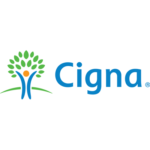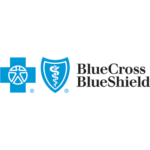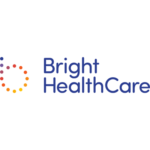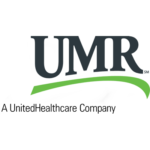Get on-demand access to a board-certified Psychiatry & Behavioral Health physician in person, at home, or in hotel.
Experience the convenience and affordability of getting your medication refills within a few minutes of your online appointment.
IV vitamin infusions for wellness, mental clarity, cognitive function, immune health, and energy.
Expert witness consultation services to the legal community on issues related to addiction medicine
Alcohol Use Disorder (AUD) affects 15 million people in the United States and results from inability to stop or control alcohol use. Because this is a chronic medical condition, expert assessment and medical intervention is the first step in treatment. Belle Meade AMP offers alcohol addiction intervention services and at-home rehab from our outpatient alcohol rehab and detox center in Nashville.
Recognizing the problem is vital to treating alcohol addiction and maintaining sobriety. Many find that once an assessment is complete, receiving proper alcohol therapy is the most effective way to stop using. This independence is the path to a more fulfilling and rewarding life.
Each treatment is developed according to an evidence-based treatment plan (EBT) for addiction. This means your care plan is based on scientific evidence and extensive academic studies that document proven success and effectiveness. The National Alliance on Mental Illness acknowledges this practice as a way to monitor your treatment and help you establish realistic goals.
Treatment focuses on the whole person. Our approach is based on the following components necessary to build the skills you need to maintain long-term sobriety.
Following detox we may recommend:
This phase gives you access to alcohol treatment services that facilitate your transition into independent living while addressing physiological, psychological and spiritual concerns.
Anxiety is a feeling of persistent worry, nervousness, or unease. Common symptoms include panic, fear, insomnia, shortness of breath, restlessness, muscle tension, difficulty concentrating and rumination of thought. Symptoms depend on the type of anxiety disorder a patient has. Experiencing occasional anxiety is a normal part of life.
However, people with anxiety disorders frequently have intense, excessive, persistent worry and fear about everyday situations. Anxiety disorders involve repeated episodes of sudden feelings of anxiety and fear or terror that reach a peak within minutes (panic attacks). Anxiety and panic interfere with daily activities, are difficult to control, out of proportion to actual danger and may become chronic.
Symptoms may start during childhood or teen years and continue into adulthood. Examples of anxiety disorders include generalized anxiety disorder, social anxiety disorder (social phobia), specific phobias and separation anxiety disorder.
Adult attention deficit hyperactivity disorder (ADHD) is a behavioral health disorder that includes a variety of symptoms such as difficulty paying attention, hyperactivity, and impulsive behavior. ADHD may lead to unstable relationships, poor work or school performance and low self-esteem. Symptoms usually begin during early childhood and continue into adolescence and adulthood. The diagnosis is sometimes not made until the person is an adult. Symptoms may not be as clear as ADHD symptoms in children. Hyperactivity may decrease in adults who struggle with impulsiveness, restlessness, and inability to focus. Treatments includes a combination of medication management and therapy.
ADHD symptoms may include:
ADHD is diagnosed when symptoms cause ongoing problems in more than one area of life. Almost everyone has some symptoms similar to ADHD at some point in their lives. If your difficulties occur occasionally, then you may not have ADHD. Persistent and disruptive symptoms may be traced to early childhood.
While the exact cause of ADHD is unclear, research suggests a combination of genetic and environmental influences.
Bipolar Disorder is marked by alternating periods of debilitating elation and depression. Formerly known as manic depression, bipolar disorder causes extreme mood swings that include emotional highs (mania or hypomania) and lows (depression). When depressed, patients may feel sad or hopeless and lose interest or pleasure in most activities. When mood shifts to mania or hypomania (less extreme than mania), patients may feel euphoric, full of energy or unusually irritable. Mood swings can affect sleep, energy, activity, judgment, behavior, and ability to think clearly.
Depression is a mood disorder that causes a persistent feeling of sadness, loss of interest in pleasurable activities, guilt, fatigue, poor concentration, loss of appetite, restlessness and/or suicidal ideation. Although depression may occur only once, patients typically have multiple episodes. During these episodes, symptoms occur most of the day, nearly every day and may include:
For many people with depression, symptoms usually are severe enough to cause noticeable problems in day-to-day activities, such as work, school, social activities, or relationships with others. Some people may feel generally miserable or unhappy without knowing why.
Insomnia is habitual sleeplessness or inability to sleep and is frequently associated with significant health problems. Common symptoms include difficulty falling asleep, staying asleep, or waking too early and inability to go back to sleep. Patients may still feel tired after waking. Insomnia can sap not only your energy level and mood but also your health, work performance and quality of life. How much sleep is enough varies from person to person, but most adults need seven to eight hours a night. At some point, many adults experience short-term (acute) insomnia, which lasts for days or weeks. It is usually the result of stress or a traumatic event. Some patients have long-term (chronic) insomnia that lasts for a month or more. Insomnia may be the primary problem, or it may be associated with other medical conditions or medications.
Mood Disorders
Mood disorders involve distorted or inconsistent thoughts and feelings that are inconsistent with surrounding circumstances and interfere with ability to function at an optimal level. You may be sad, empty, irritable or have depression alternating with a happy state of mind.
Examples of mood disorders include:
Mood disorders can be successfully treated with medication and talk therapy.
Talk to a healthcare professional if your thoughts and feeling interfere with work, relationships, social activities, or other aspects of life.
Obsessive-Compulsive Disorder is a disorder in which people have unwanted and repeated thoughts, feelings, ideas, sensations (obsessions), and behaviors that drive them to perform a repetitive action (compulsions), often to relieve anxiety or stress for a period of time. Features include a pattern of unwanted thoughts and fears (obsessions) that lead you to do repetitive behaviors (compulsions).
These obsessions and compulsions interfere with daily activities and cause significant distress. Despite efforts to ignore or get rid of bothersome thoughts or urges, they keep coming back. This leads to more ritualistic behavior—the vicious cycle of OCD. OCD often centers around certain themes—for example, an excessive fear of contamination by germs. To ease contamination fears, you may compulsively wash your hands until they are sore and chapped.
Obsessive-compulsive disorder usually includes both obsessions and compulsions, but it is also possible to have only obsession symptoms or only compulsion symptoms. You may or may not realize that your obsessions and compulsions are excessive or unreasonable, but they take up a great deal of time and interfere with your daily routine and social, school or work functioning.
Panic Disorder is debilitating anxiety and fear arising suddenly and without warning. A panic attack is a sudden episode of intense fear that triggers severe physical reactions when there is no real danger or apparent cause. Panic attacks can be very frightening. When panic attacks occur, you might think you are losing control, having a heart attack, or even dying. Many people have just one or two panic attacks in their lifetimes, and the problem goes away, perhaps when a stressful situation ends. If you have had recurrent, unexpected panic attacks and spent long periods in constant fear of another attack, you may have a condition called panic disorder. Although panic attacks are not life-threatening, they can be frightening and significantly affect your quality of life. Panic attacks typically begin suddenly and without warning.
Signs or symptoms may include:
One of the worst things about panic attacks is the intense fear that you will have another one. You may fear having panic attacks so much that you avoid situations where they may occur.
Post-Traumatic Stress Disorder develops following intense fear, stress, or a distressing life event, and is often characterized by a feeling of helplessness and hypervigilance that negatively affects a person’s life. Post-traumatic stress disorder (PTSD) is a condition triggered by a terrifying event—either experiencing or witnessing it.
Symptoms may include flashbacks, nightmares, and severe anxiety, as well as uncontrollable thoughts about the event. Most people who go through traumatic events may have temporary difficulty adjusting and coping, but with time and good self-care, they usually get better. If the symptoms get worse, last for months or even years, and interfere with your day-to-day functioning, you may have PTSD.
Symptoms may start within one month of a traumatic event, but sometimes symptoms may not appear until years after the event. These symptoms cause significant problems in social or work situations and in relationships. They can also interfere with your ability to go about your normal daily tasks.
PTSD symptoms are generally grouped into four types: intrusive memories, avoidance, negative changes in thinking and mood, and changes in physical and emotional reactions. Symptoms can vary over time or vary from person to person.
Gambling Addiction is persistent, recurrent, risky behavior involving financial wagering that causes distress and impairs a person’s livelihood. Compulsive gambling, also called gambling disorder, is the uncontrollable urge to keep gambling despite the toll it takes on your life. Gambling means that you are willing to risk something you value in the hope of getting something of even greater value. Gambling can stimulate the brain’s reward system much like drugs or alcohol can, leading to addiction. If you have a problem with compulsive gambling, you may continually chase bets that lead to losses, hide your behavior, deplete savings, accumulate debt, or even resort to theft or fraud to support your addiction. Compulsive gambling is a serious condition that can destroy lives.
Signs and symptoms of compulsive gambling (gambling disorder) include:
Unlike most casual gamblers who stop when losing or set a loss limit, people with a compulsive gambling problem are compelled to keep playing to recover their money — a pattern that becomes increasingly destructive over time. Some people with a compulsive gambling problem may have remission where they gamble less or not at all for a period of time. However, without treatment, the remission usually is not permanent.
Substance Use Disorders involve persistent use of drugs (including alcohol) despite adverse consequences and are characterized by behavioral, emotional, mental, physical, and psychological problems such as:
Drug classes frequently implicated in Substance Use Disorder include alcohol, caffeine, cannabis, phencyclidine and other hallucinogens, inhalants, opioids, sedative-hypnotics, anxiolytics, stimulants and tobacco.
Sexual addiction, also known as hypersexuality or compulsive sexual behavior, involves excessive thoughts and activity that negatively impacts a person’s health, relationships, job or other aspects of life. Symptoms range from mild to severe and include recurrent, uncontrollable thoughts or urges to participate in sexual behavior. Similar to other addictions, sexual addiction may develop as an attempt to escape or self-medicate for other problems, such as loneliness, depression or anxiety. If left untreated, a person may have difficulty establishing and maintaining healthy relationships, engage in risky sexual behavior, contract a sexually transmitted disease, experience financial hardship, legal problems or loss of employment.
Often a person rationalizes his or her thoughts and behavior or denies that there is a problem. Diagnostic criteria must be clearly met and explained to the person. Treatment aims at reduction of impulses that result in maladaptive sexual thoughts and behavior.
Cognitive Behavioral Therapy (CBT) provides a variety of techniques and tools that help change a person’s behavior. CBT equips a person with positive coping skills and reduces unwanted sexual urges.
Prescription medications may include a selective serotonin reuptake inhibitor or other psychotropics that treat a coexisting mood disorder.









Belle Meade Addiction Medicine & Psychiatry, PLLC is a concierge addiction medicine and psychiatry practice headquartered in Nashville, Tennessee.
Copyright© 2022 Belle Meade AMP | All Rights Reserved | Staffing & Supervision Policy | Notice of Privacy Practices | HIPAA Policy | Sitemap